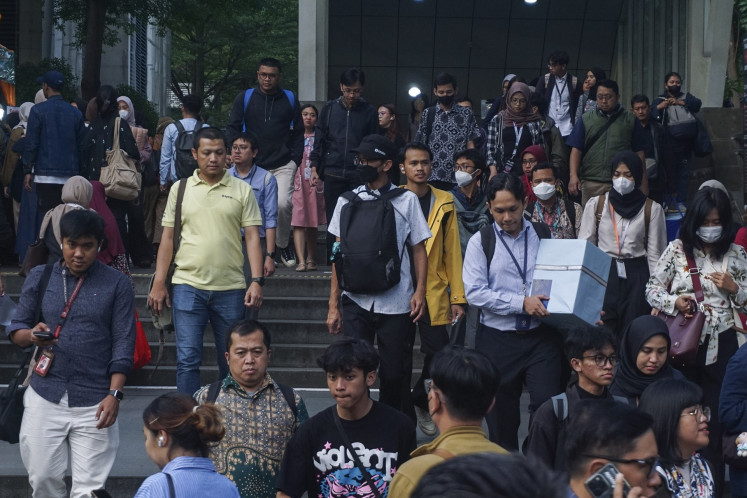Popular Reads
Top Results
Can't find what you're looking for?
View all search resultsPopular Reads
Top Results
Can't find what you're looking for?
View all search results[ANALYSIS] SWF: Challenges and impacts on infrastructure financing
Indonesia Investment Authority (INA) serves to manage investments and optimize the value of the managed investments in the long term.
Change text size
Gift Premium Articles
to Anyone
I
ndonesia has established a sovereign wealth fund (SWF) known as the Indonesia Investment Authority (INA). INA's establishment was motivated by the need for large investment in development, especially infrastructure, while domestic funding sources are limited. The INA is based on Law No. 11/2020 on job creation and on government regulations No. 73/2020 and No. 74/2020.
INA serves to manage investment and optimize the value of the managed investments in the long term. Types of investment the INA can make include placement of funds in financial instruments, asset management, cooperation with other parties including trust funds as well as providing and receiving loans.
In general, INA aims to attract medium- and long-term investment of both domestic and foreign origin. INA gets an initial capital of US$5 billion from the government and has a target to attract between $15 billion and $20 billion in funds from abroad. There are two types of funding in INA, namely master funds, and thematic funds directed at certain sectors. Some foreign investors have expressed interest in providing funding to INA, such as United States International Development Finance Corporation (US DFC), Japan Bank for International Cooperation (JBIC), Canada’s Caisse de Depot et Placement du Quebec (CDBQ) and Dutch pension investment company Algemene Pensioen Groep (APG). The potential funds raised from these four investors is estimated at $9.5 billion.
The form of the INA differs from SWFs in several countries in terms of the sources and purpose of the investment. There are 122 SWFs in the world which that into four groups according to their objectives and sources of investment, including natural resources surplus, foreign exchange reserves, pension reserves, and government funding and private investors.
Conventionally, some countries established SWFs to manage a surplus of wealth aimed at anticipating future needs, such as Temasek and the Government of Singapore Investment Corporation (GIC) in Singapore, and the Norwegian Oil Fund in Norway. By contrast, INA was established to obtain funding, especially from foreign investors. Judging from the source of funds, the form of the entity and the characteristics of the investment, the establishment of INA is quite similar to the SWF of India called the National Investment and Infrastructure Fund (NIIF).
INA also differs from existing state-owned investment and infrastructure institutions in Indonesia, such as Pusat Investasi Pemerintah (PIP), and infrastructure financing company PT Sarana Multi Infrastruktur (SMI). INA was established by the omnibus law on job creation and answers directly to the president, and aims to meet the international standards required by potential international investment partners. Meanwhile, PIP is a public service agency and not separated state assets, so the PIP investment scheme is noncommercial in nature and must comply with all state provisions.
As for PT SMI, it must comply with the Corporation Law and the State-Owned Enterprises (SOEs) Law with a separate share of the state assets. Unlike SMI, INA has investment flexibility and the ability to adopt international business practices.


















